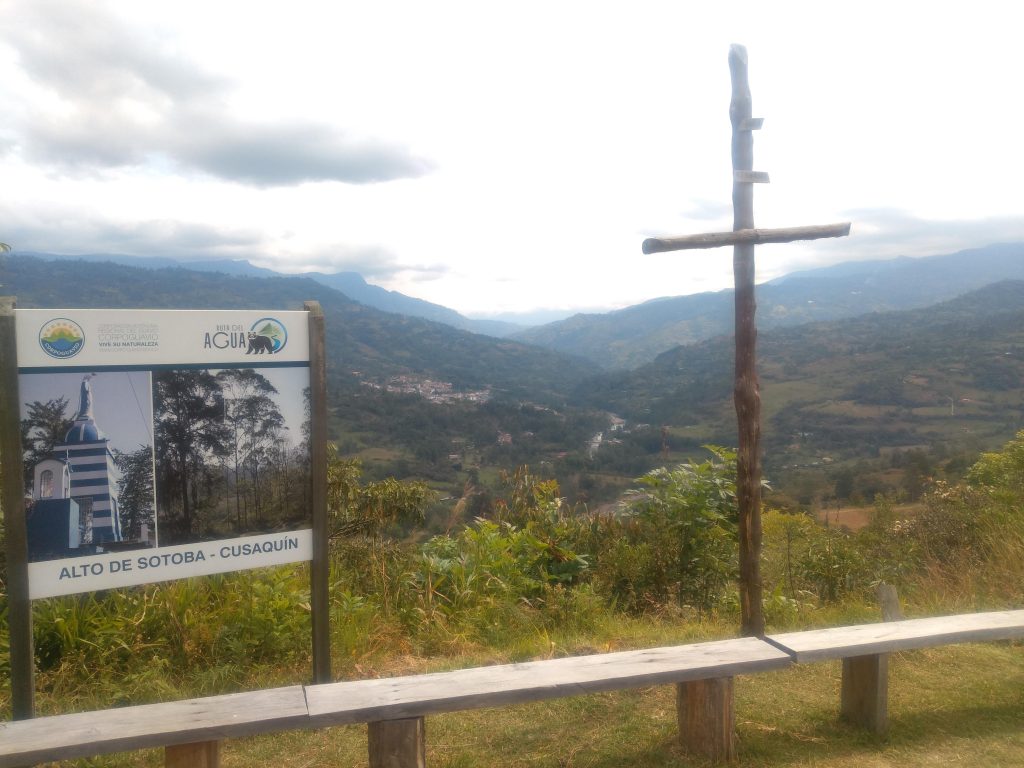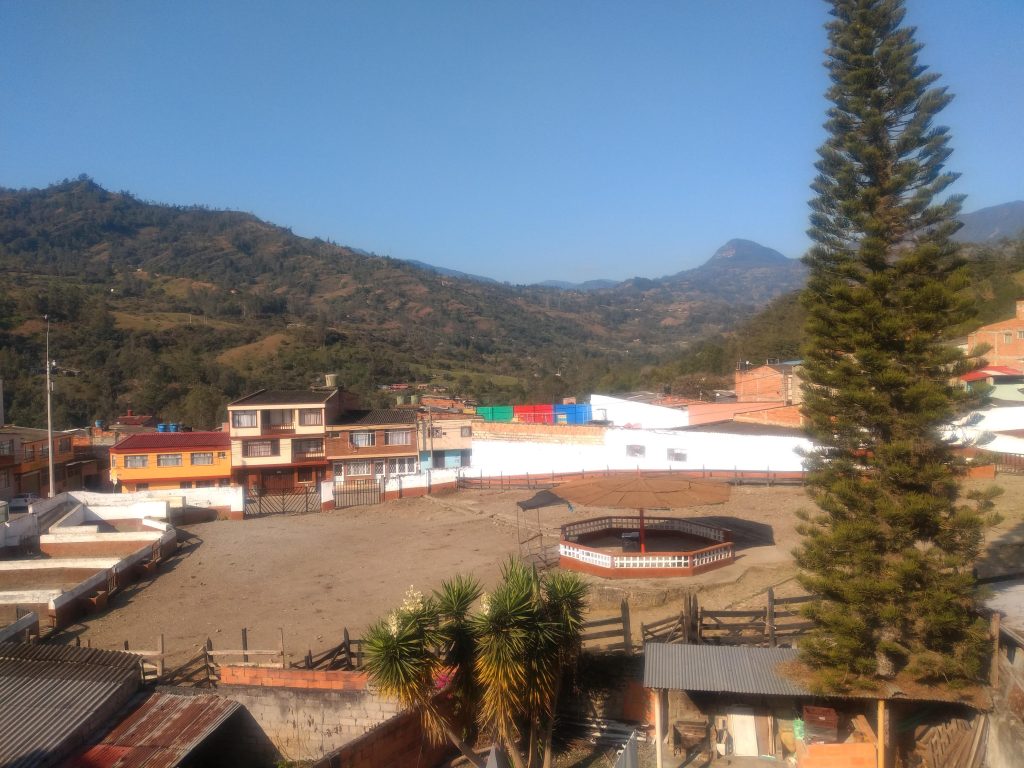
[Listen to an audio version of this blog entry here.]
I’ve generally been reluctant to leave Bogotá during Colombia’s tourism high season or at long weekends. So the first holiday Monday of the year is a negative on both fronts.
However, feeling somewhat annoyed and frustrated with my rather bland routine in the capital, I took a gamble and escaped during the January holiday weekend.
Pueblo peace
My default option these days is to travel north of Bogotá as I live a convenient five-minute walk from the northern bus terminal. Any destination to the south requires a trek across Bogotá to either the main terminal in Salitre or the satellite station in the far south. Avoiding Bogotá’s public transport and traffic is good for the body and mind at any time.
In terms of the destination, as readers of previous posts detailing small-town (pueblo) visits will know, the location itself isn’t the most important aspect.
Almost any town within a 200-kilometre radius of Bogotá will have a reasonably priced hotel, a picturesque main square, a panadería with drinkable coffee, a tienda with affordable beers and a few hills to wander around to work up a sweat and enjoy a little bit of nature. It’s a bonus if there’s a relatively clean river or lake to chill out by and even bathe in. On the minus side, one usually has to be prepared to encounter some mad dogs — nothing’s perfect.
This time around, I wanted somewhere warmer than Bogotá but not ridiculously hot. Looking at the map, for some unknown reason I was drawn to the town of Gachetá.

Looking down on Gachetá from the statue of the Virgin Mary (the actual statue is not in view, it’s behind the camera!).
Capital of the Guavio Province in the department of Cundinamarca and situated about 100 km (depending on the route taken) east of Bogotá, a Google search told me it’s at an altitude of just under 1,800 metres with average daytime temperatures of over 20 degrees Celsius and no colder than eight degrees at night. The jacket can stay in the bag.
A mistake, however, was to assume that buses from Bogotá to Gachetá leave from the northern terminal. They don’t. Thankfully, though, I didn’t have to go to the other terminals. Gachetá-bound buses leave from Calle 72 with Avenida Caracas, a 40-minute Transmilenio journey from Terminal Norte.
‘No Colombian town is complete without a hilltop statue of Mary or Jesus to «discover».’
That minor miscalculation aside, another anxiety I have about leaving the city on the Friday of a long weekend, heavy traffic, mercifully didn’t come to pass on this particular route. In fact, it was largely congestion-free.
The only slight inconvenience — down to my terminal mix-up — was that I arrived in Gachetá after dusk. Normally, I like to get to a new place before nightfall. However, for a small and very safe country town where the bus terminal is a short walk from the centre, this is less of a concern. Rocking up in an unfamiliar big city at night is another matter entirely.
The first item on the agenda, then, was to find a reasonably priced hotel. That came in the form of Hotel El Portal de la Cuarta. At 25,000 COP per night for a spacious ensuite room with a hot-water shower (not that the hot water was needed), a comfortable double bed, cable TV and, of course, the essential steady WiFi, one can’t go too wrong. Wilmer, the mild-mannered owner, is also on hand to give some sightseeing tips.
Scenery to die for
One of those tips, perfect for the hillwalker that I am, was the Ruta del Agua (Water Route). This incorporates a four-kilometre trek (taking the most direct route) up to a statue of — go on, give a guess — yes, that’s right, the Virgin Mary (no Colombian town is complete without such an attraction. If it’s not Mary, it’s Jesus). The spot offers a nice view of the town and surrounds.
It’s not a cul-de-sac trail, but whether you go the shorter way or take the slightly longer route via Carrera 5 and a townland called La Chamba, you’ll cross the Río Salinero. This predominantly shallow, fast-flowing river does have some deeper spots where you can have a refreshing dip — in rainy season it might be a different animal altogether.
Mentioning Carrera 5, exiting the town taking this street is where you’ll pass what is arguably one of the most scenic cemeteries in the country. It is, um, to die for. Sorry!
The hill on which the Virgin Mary stands is perhaps about 100 metres higher than Gachetá. So for those looking for something a little more taxing in terms of a trek, a walk to the nearby village of Junín offers just that.
At an altitude of 2,300 metres, it’s a good 500 metres closer to the stars than Gachetá. The shortest, largely traffic-free, rustic approach is just six kilometres away. It does, though, involve a few decent inclines. It certainly puts the legs to work. The reward is getting to take in the quaint Junín, sipping on a coffee and arepa or, whisper it, a cold beer.
It would be remiss of me not to go into a little more detail on the arepa, Colombia’s traditional cornflour snack, available in these parts.
Each region of the country has its own take on them but I have to say the cheese-filled, unsweetened ones in the Guavio Province are about as good as they get. (I mean this in terms of plain arepas, not the delicious Venezuelan ones that are stuffed with all sorts of fillings or the egg/meat-filled arepas originating from Colombia’s Caribbean coast.)
Back to Gachetá, some might say that it is the least impressive of Guavio’s towns. From what I’ve been told, the similar-sounding Gachalá, for one, on the banks of the Guavio Reservoir, a very scenic man-made lake, is more idyllic.
That may be so, but in terms of a quiet rural retreat, Gachetá grades well. It beats being bored in Bogotá anyway.
_______________________________________________________________
Listen to Wrong Way’s Colombia Cast podcast here.
Facebook: Wrong Way Corrigan — The Blog & IQuiz «The Bogotá Pub Quiz».







Gracias por dar a conocer la región del guavio
Califica:
-
Me
gusta
1
- No me
gusta
0
ReportarFue un placer.
Califica:
-
Me
gusta
0
- No me
gusta
0
Reportar